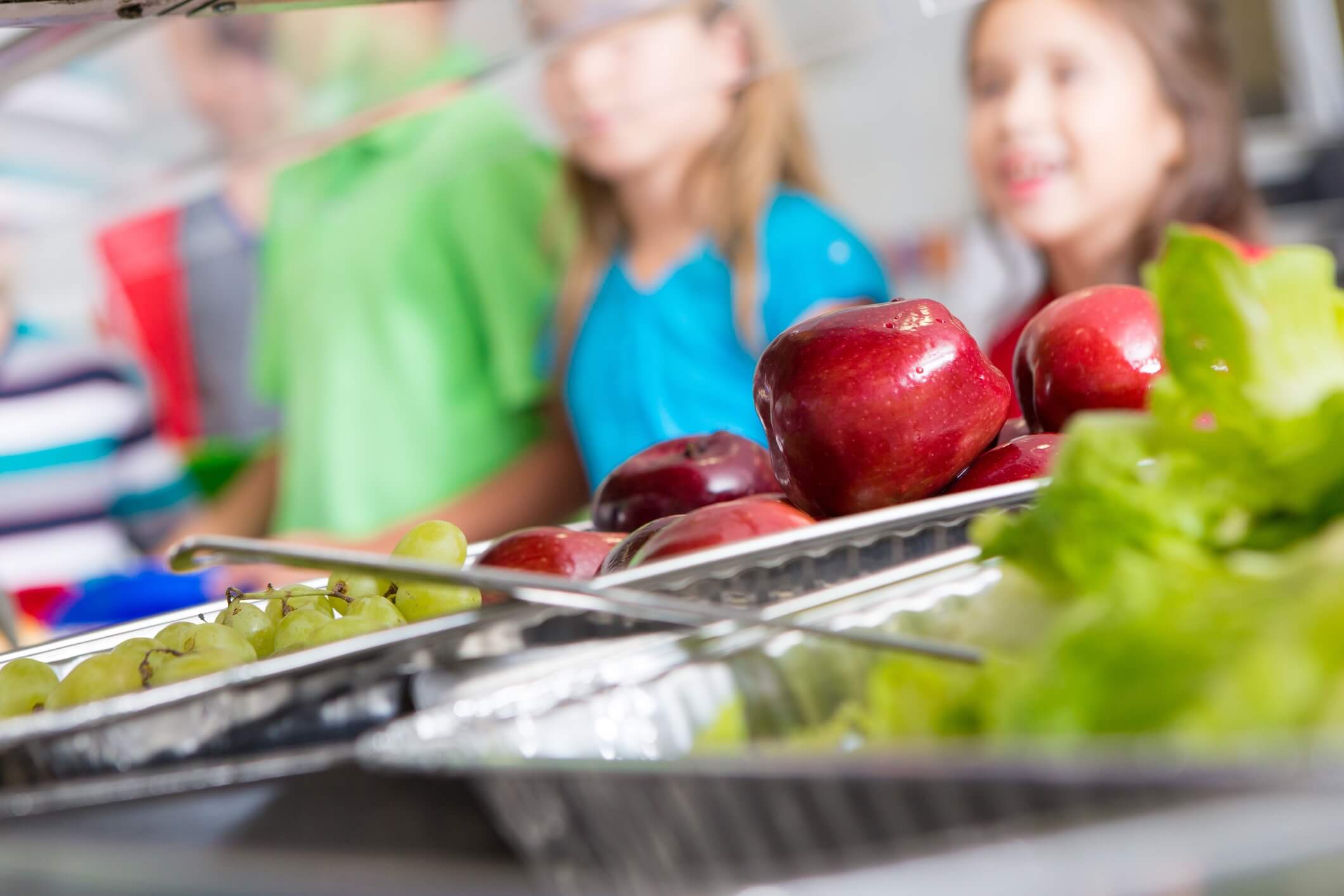By Kari Hamerschlag • Originally published on Calmatters.org
As California’s schools prepared to reopen earlier this year, protecting children’s health should have been a top priority. One surprising way to achieve this, along with rigorous COVID-19 protocols, is to make school food more accessible and healthful. Two bills in the state legislature could provide a booster shot in that direction.
One measure, Senate Bill 364, would make California the first state to provide universal access to school meals. The other, Assembly Bill 558, would provide incentives for healthier plant-based meals. Access and quality nutrition are essential to bolstering kids’ health during the pandemic and beyond.
Despite improvements over the last decade, a recent report by Friends of the Earth finds that the most widely offered meals include ultra-processed and fast food items such as chicken nuggets, cheeseburgers, meat pizzas, hotdogs, and deli meat sandwiches. Analyzing more than 1,300 lunch entrees across California’s 25 largest school districts, the researchers found that 94% of school lunch entrées feature meat and dairy, 16% of meals include processed meats considered carcinogenic by the World Health Organization, and only 4% are plant-based.
These meat- and dairy-centric meals are out of step with leading public health guidance around healthy eating. The American Medical Association, the American Cancer Society, and the Harvard T.H. Chan School of Public Health all urge more consumption of plant-based foods and less meat — especially processed meat. Even the 2020–25 USDA Dietary Guidelines for Americans, a document intended to guide school meal patterns, has linked red and processed meats to detrimental health outcomes.
Low-Cost Foods Come with High Costs for Health
Dedicated school food-service workers do their best to nourish our kids, but the USDA Foods program provides ready and low-cost access to subsidized and processed industrial meat and dairy products that cash-strapped school districts can’t resist. This artificially cheap USDA food program primarily benefits giant companies like Arkansas-based Tyson Foods and makes it difficult for California’s sustainable farmers and ranchers to compete.
The glut of factory farm meat and dairy in school meals may carry a low sticker price, but the costs for public health are unacceptable — especially for low-income children (including many children of color) who rely on school lunch as a main source of nutrition. Black and brown children, who face increasing levels of diabetes and experience obesity at three times the rate of white kids in California, would be much better served by fresh, healthy, plant-forward, locally sourced meals.
The Many Benefits of Plant-Based Meals
Shifting to lower-carbon, plant-forward meals would also benefit our environment and climate future. As the Friends of the Earth report documents, animal products, which rely on large quantities of pesticides, fertilizer, and water, comprise a whopping 96% of the carbon footprint of all USDA Foods products purchased by schools across the state.
If every school district in California replaced a beef burger with a black bean burger just once a month, that would slash nearly 222 million pounds of carbon emissions — equivalent to not burning 11.4 million gallons of gasoline, or taking 22,000 cars off the road each year.
As California schools emerge from the pandemic’s deep freeze, state and federal policymakers have an opportunity to improve the quality and sustainability of meals, generating a triple win for kids’ health, small farmers, and our climate.
Congress must help reform USDA Foods and the National School Lunch Program in the upcoming Child Nutrition Reauthorization. California legislators can do their part by passing SB 364 and AB 558 to provide incentives for plant-based meals. California should also continue funding the $10 million Farm to School initiative championed by first partner Jennifer Siebel Newsom. This program educates kids about food and farming, and enables schools to source more sustainable foods from local farmers.
With public health being paramount, we must prioritize the nourishment and long-term health of all children. Our public schools and the food they serve are central to that task. Let’s transform school food so that it nourishes kids’ health and creates new opportunities for farmers and a better climate future.
Tell us in the comments:
-
Have you or your children been offered plant-based school lunch options?
-
Is there a movement for more healthier food options in your community?
-
What other institutions could benefit from healthier food options?
Feature Image: istock.com/SDIProductions




